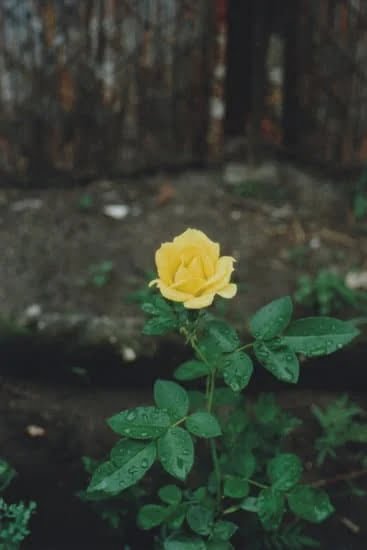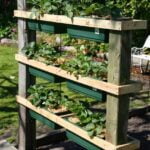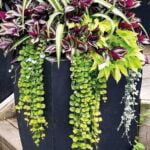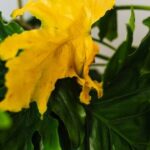Are you looking to transform your outdoor space with unique and beautiful mn landscape ideas? Minnesota is home to a diverse range of landscapes, from lush greenery to stunning water features. In this article, we will explore the beauty of Minnesota landscapes and provide tips and inspiration for creating your own picturesque outdoor oasis.
When considering landscape design in Minnesota, it’s important to understand the impact of the climate on the overall look and feel of your outdoor space. From harsh winters to humid summers, the climate in Minnesota plays a significant role in determining the types of plants, flowers, and hardscaping elements that are suitable for your landscape.
Choosing the right flora is essential for creating a visually appealing and sustainable landscape. We’ll delve into native plants and flowers that thrive in Minnesota, offering a comprehensive guide to selecting the perfect flora for your outdoor space. Whether you’re interested in colorful blooms or low-maintenance greenery, there are plenty of options to consider for your Minnesota landscape.
Understanding the Climate in Minnesota
Minnesota’s diverse climate has a significant impact on landscape design in the region. With its continental climate, the state experiences hot summers and cold winters, making it essential for homeowners to choose plants and hardscape elements that can withstand these extreme weather conditions. Understanding the climate is crucial when designing a Minnesota landscape, as it directly influences the choice of flora and materials.
The harsh winters in Minnesota require careful consideration when selecting plants for landscaping. Native plants like black-eyed Susans, coneflowers, and wild bergamot are not only beautiful but also resilient to the state’s cold temperatures. These native plants are well-adapted to survive freezing temperatures and snow, making them excellent choices for homeowners looking to create a low-maintenance yet stunning landscape.
In addition to plant selection, hardscaping plays a crucial role in Minnesota landscape design. The use of rocks, stones, and pathways can add both functionality and aesthetic appeal to outdoor spaces.
Incorporating permeable hardscaping materials like gravel or permeable pavers can help with water drainage during heavy rains or snowmelt, which is essential in managing the precipitation that comes with Minnesota’s changing seasons. By understanding the climate and its impact on landscape design, homeowners can create beautiful outdoor spaces that thrive year-round in Minnesota.
Native Plants and Flowers for Minnesota Landscapes
When it comes to designing a landscape in Minnesota, incorporating native plants and flowers is essential for creating a sustainable and thriving outdoor space. Not only do native plants have the ability to withstand the state’s climate and soil conditions, but they also provide crucial support for local wildlife. Here are some native plants and flowers that are ideal for Minnesota landscapes:
- Wild Bergamot: This perennial plant produces clusters of lavender-colored blooms that attract pollinators such as bees and butterflies. It thrives in full sun and well-drained soil.
- Purple Coneflower: Known for its daisy-like purple flowers, this resilient plant can tolerate various soil types and is drought tolerant once established. It adds a pop of color to any garden or landscape.
- Common Milkweed: As an essential food source for monarch butterflies, common milkweed is a must-have for any Minnesota landscape. Its pinkish-purple flowers bloom in summer and emit a pleasant fragrance.
In addition to these specific plant options, it’s important to consider the overall ecosystem when choosing flora for your Minnesota landscape. Native grasses such as big bluestem and prairie dropseed can add texture and movement to your outdoor space while providing habitat for birds and beneficial insects.
Furthermore, prioritizing native plants over non-native species can help preserve the natural biodiversity of Minnesota’s landscapes. By supporting local habitats with the right flora choices, homeowners can contribute to the overall health of the environment while creating a visually stunning outdoor space.
Hardscaping Ideas for Minnesota Landscapes
When it comes to hardscaping ideas for Minnesota landscapes, the use of rocks, stones, and pathways can add a natural and aesthetic appeal to any outdoor space. Choosing the right types of rocks and stones that are native to Minnesota can further enhance the authenticity of the landscape design. Incorporating natural elements like boulders, limestone, or granite can create a visually appealing and low-maintenance landscaping feature that complements the local environment.
Choosing the Right Pathway Materials
When designing pathways for your Minnesota landscape, it’s important to select materials that can withstand the state’s climate. Using durable materials like flagstone, pavers, or gravel can create functional and visually appealing paths that can endure harsh winter conditions. Additionally, incorporating pathways into your landscape design can provide a sense of structure and guide visitors through the outdoor space in an organized manner.
Creating Functional Outdoor Spaces
In addition to adding visual interest to your landscape, hardscaping with rocks, stones, and pathways can also create functional outdoor spaces for various activities. Whether it’s a stone patio for outdoor dining or a winding pathway that leads to a secluded garden nook, these hardscaping elements can transform your outdoor area into a versatile and inviting environment for relaxation and entertainment.
Incorporating rocks, stones, and pathways into your Minnesota landscape design not only adds beauty but also offers practicality and functionality. When done thoughtfully and using native elements, these features blend seamlessly with the local environment while providing lasting enjoyment throughout every season.
Seasonal Maintenance Tips for Minnesota Landscapes
When it comes to maintaining your Minnesota landscape, it’s important to take into consideration the seasonal changes that occur throughout the year. From harsh winters to hot summers, each season brings its own set of challenges and responsibilities for keeping your outdoor space looking beautiful. Here are some essential seasonal maintenance tips to help you keep your Minnesota landscape in top shape year-round.
In the spring, one of the most crucial tasks is to clean up any debris that has accumulated over the winter months. This includes removing any fallen branches, clearing away dead leaves, and tidying up flower beds. Spring is also an ideal time to prune shrubs and trees, as well as divide and transplant any perennials that have become overcrowded. Additionally, fertilizing your lawn and applying a pre-emergent herbicide can help prevent weeds from taking over your landscape.
During the summer months, regular mowing, watering, and weeding are essential for maintaining a healthy and vibrant landscape. It’s also important to inspect your plants for any signs of pests or disease and address any issues promptly. To keep your outdoor space looking its best during the hot summer months, consider adding some colorful annual flowers to your landscape for an extra pop of color.
As fall approaches, start preparing your landscape for the coming winter months by mulching garden beds and protecting delicate plants from freezing temperatures. Raking leaves regularly will also prevent them from smothering your lawn and depriving it of sunlight and air. And don’t forget to plant spring-blooming bulbs like tulips and daffodils in the fall for a burst of color when winter finally fades away.
| Maintenance Tasks | Season |
|---|---|
| Cleaning up debris, pruning shrubs and trees | Spring |
| Mowing, watering, weeding | Summer |
| Mulching garden beds, protecting plants from freezing temperatures | Fall |
Incorporating Water Features Into Your Minnesota Landscape
When it comes to enhancing the beauty of your Minnesota landscape, incorporating water features can add a sense of tranquility and visual appeal to your outdoor space. From serene ponds to elegant waterfalls, there are various options to choose from when considering water elements for your landscape design.
One popular option for adding a water feature to your Minnesota landscape is the installation of a pond. Ponds not only provide a peaceful and natural feel but also create a habitat for local wildlife such as frogs, birds, and dragonflies. Additionally, ponds can be integrated with aquatic plants such as lilies or lotus flowers, adding further aesthetic appeal to your landscape.
Another striking water feature that can elevate your Minnesota landscape is a waterfall. Whether you opt for a small cascading waterfall or a larger, more dramatic design, the sights and sounds of flowing water can create an oasis in your backyard. Waterfalls can also be designed to flow into ponds, providing both an attractive visual element and the calming sound of trickling water.
A well-designed water feature can become the focal point of your outdoor space while also complementing the natural beauty of the Minnesota landscape. As you plan your landscaping project, consider how incorporating a pond or waterfall can enhance the overall aesthetics and atmosphere of your outdoor environment.
| Water Feature Option | Benefits |
|---|---|
| Pond | Creates natural habitat for wildlife; integrates with aquatic plants |
| Waterfall | Provides calming sights and sounds; becomes focal point of outdoor space |
Minnesota Landscape Design Inspiration
Minnesota is home to a diverse range of stunning landscapes, from the tranquil shores of Lake Superior to the rolling prairies of the southern region. Many homeowners in Minnesota look to the natural beauty of their surroundings for inspiration when designing their own outdoor spaces. Whether it’s the lush greenery of a forested area or the vibrant colors of a wildflower meadow, there are countless opportunities for creating a breathtaking landscape right in your own backyard.
Lakefront Gardens
One of the most iconic features of Minnesota landscapes is its abundant lakes. Homeowners living near these bodies of water often take advantage of their picturesque views by creating lakefront gardens.
These gardens typically incorporate native plants and flowers that thrive in the moist soil found near lakeshores, such as swamp milkweed, turtlehead, and blue flag iris. Additionally, incorporating hardscaping elements like natural stone pathways and seating areas can enhance the natural beauty while providing functional spaces for relaxation and entertainment.
Prairie-Inspired Landscapes
The expansive prairies that cover much of southern Minnesota offer another source of inspiration for landscape design. Homeowners looking to create a low-maintenance yet visually striking outdoor space may opt to incorporate native prairie grasses and wildflowers into their landscaping. Species like big bluestem, butterfly milkweed, and coneflowers not only add beautiful pops of color but also attract local wildlife like butterflies and songbirds.
Whether you’re drawn to the serene beauty of lakefront gardens or the untamed charm of prairie-inspired landscapes, Minnesota offers an abundance of inspiration for creating stunning outdoor spaces that reflect the unique natural environment. By leveraging native plants, embracing hardscaping elements, and drawing inspiration from local ecosystems, homeowners in Minnesota can bring the beauty of their surroundings into their own yards while also supporting local biodiversity and sustainability efforts.
Tips for Creating a Sustainable and Eco-Friendly Landscape in Minnesota
In conclusion, Minnesota landscapes offer a unique and diverse canvas for outdoor design and beauty. With the right understanding of the climate in Minnesota, homeowners can create stunning and functional outdoor spaces that thrive in this specific environment.
Utilizing native plants and flowers is essential for creating a landscape that not only looks beautiful but also supports the local ecosystem. By incorporating hardscaping ideas such as rocks, stones, and pathways, homeowners can add depth and texture to their outdoor space while still maintaining a sustainable and eco-friendly landscape.
Additionally, seasonal maintenance tips are crucial for keeping Minnesota landscapes looking their best year-round. From incorporating water features like ponds and waterfalls to seeking inspiration from local gardens, there are endless possibilities for creating a one-of-a-kind outdoor oasis. Lastly, focusing on sustainable practices such as reducing water usage and using native plants will not only benefit the environment but also help maintain a healthy and thriving landscape for years to come.
In summary, by implementing these mn landscape ideas, homeowners in Minnesota can create stunning outdoor spaces that not only reflect the natural beauty of the state but also contribute to its sustainability. Whether it’s through native plant choices or eco-friendly design practices, embracing the uniqueness of Minnesota’s landscapes is key to creating a sustainable and visually appealing outdoor environment.
Frequently Asked Questions
What Is the Best Low Maintenance Landscaping?
The best low maintenance landscaping often includes planting native plants that are well adapted to the local climate and require minimal water, fertilization, and maintenance. Using mulch and rocks can also help reduce the need for frequent upkeep, as well as opting for durable materials for hardscaping.
What Is the Least Expensive Backyard Landscaping?
The least expensive backyard landscaping options typically involve DIY projects such as creating a simple patio or walkway with inexpensive materials like gravel or concrete pavers. Using native plants and grasses, which require less maintenance and water, can also help keep costs down.
What Are the Easy Landscaping Plants in Minnesota?
Easy landscaping plants in Minnesota include native species like coneflowers, black-eyed susans, hostas, and ornamental grasses. These plants are well adapted to the region’s climate and soil conditions, making them low maintenance options for Minnesota gardens. Additionally, choosing plants that are resistant to local pests and diseases can further simplify landscaping efforts.

Welcome to my gardening blog! I am passionate about plants and enjoy sharing my knowledge and experiences with others. In this blog, I will write about everything related to gardening, from tips on how to get started to updates on my own garden projects.





